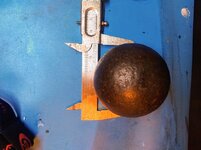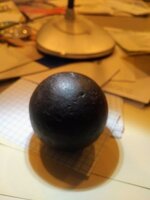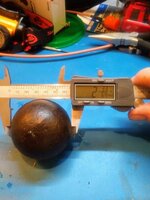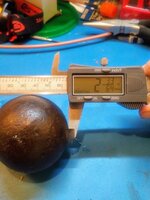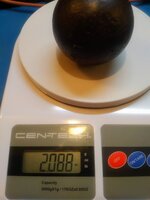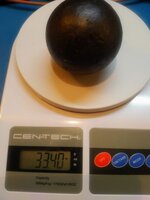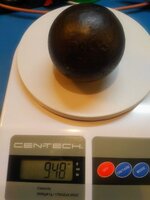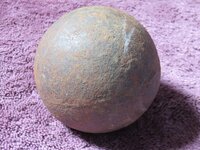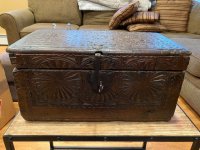jimhenry
Greenie
- Sep 9, 2017
- 17
- 77
- Detector(s) used
- Garrett AT Pro, Pinpointer Pro AT, Master Hunter Groundhog ADS
- Primary Interest:
- All Treasure Hunting
I found this "Two-Pounder" or so I think, around 1980 at the ruins of an old stone farmhouse at the location of the Revolutionary War skirmish "Battle of Signal Hill". This was based on my pre-Internet library research and talking to locals back then. As I got back into the hobby recently I began to doubt my memory as everything I googled seemed to relate Signal Hill to the French and Indian War, and in Canada, until today I found this:
TEHS - Quarterly Archives
The location referenced in this article is exactly where I found this. I cleaned it up with electrolysis back then. It is 2" in diameter and weighs exactly 2 pounds, and by exactly I mean that I weigh exactly 2 more pounds on my bathroom scale which is a high end one, when I am holding this.
Let me know if the attachments don't come through.
TEHS - Quarterly Archives
The location referenced in this article is exactly where I found this. I cleaned it up with electrolysis back then. It is 2" in diameter and weighs exactly 2 pounds, and by exactly I mean that I weigh exactly 2 more pounds on my bathroom scale which is a high end one, when I am holding this.
Let me know if the attachments don't come through.



